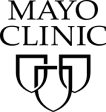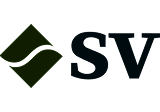Overview
Valued at ~$1.07 billion in 2023, the femoral closure devices market is projected to reach
~$1.17 billion by 2028, increasing at a CAGR of 1.8% over the 2023-2028
forecast period. This Market Snapshot is part of LSI’s Market Intelligence platform, your
one-stop-shop for global medtech market sizing and analysis, procedure volume data, startup company- and
deal-tracking, curated insights, and more.
Femoral closure devices are medical devices used to achieve hemostasis at the arteriotomy site following
catheter-based cardiovascular or endovascular procedures. These devices help seal the puncture site and promote
healing using various mechanisms of action. Broadly categorized into active and passive types, active femoral
closure devices use clips, plugs, or sutures to facilitate hemostasis, while passive devices apply pressure to
the wound site, supporting coagulation and serving as an alternative to mechanical compression.
Products included within the scope of this analysis include:
Femoral wound-closure devices
This Market Snapshot is intended to provide a high-level overview of the global market for vascular closure
devices for femoral access, with key insights into:
Unit volumes from 2023 to 2028
Market forecasts from 2023 to 2028
Market insights
Competitive landscape analysis of major competitors
Insights into key market events for strategic and startups
Femoral Closure Devices Market Snapshot Summary
| Snapshot Aspect | Data and Details |
| Base Year for Estimate | 2023 |
| Forecast Period | 2023 - 2028 |
| Market Size in 2023 | $1.07 billion |
| CAGR | 1.8% |
| Projected Market Size in 2028 | $1.17 billion |
Femoral Closure Devices Market Insights
The femoral closure devices market is primarily driven by trends in interventional
cardiology and peripheral angioplasty procedures, including percutaneous coronary intervention (PCI),
coronary angiography, and peripheral vascular angioplasty.
The growth of vascular closure device unit volumes is expected to be slower than that of interventional
procedures due to the increasing use of radial artery access for vascular interventions. Radial artery closure
does not require intravascular closure devices, relying instead on mechanical compression and, in some cases,
hemostatic pads. This shift toward radial access is driven by benefits such as reduced bleeding risks, fewer
vascular complications, improved quality of life, and reduced costs.
Despite the rise in employment of radial access, femoral closure devices continue to see demand—particularly for
larger procedures such as transcatheter
aortic valve replacement, which predominantly uses femoral access. These large-device procedures are
helping to offset the impact of the increasing preference for radial access, supporting ongoing growth in the
femoral closure devices market.
Competitive Landscape
The full Market Snapshot includes a robust analysis of the competitive landscape for the femoral closure devices
market. This includes estimated market revenue and market share for key players, such as Terumo, Abbott, and
Cardiva/Haemonetics.

Select Market Events
| Company | Date | Type | Event |
|
Terumo
|
10/2023 | Regulatory Approval | Terumo received CE markings for its Angio-Seal VIP and Femoseal. |
|
Teleflex
|
4/2024 | Clinical Milestone | Teleflex announced the first patient enrollment in a clinical registry to study the outcomes of the MANTA Vascular Closure Device in transcatheter aortic valve replacement procedures. |
Key Companies Covered
Cardinal Health
Cordis
Endocor
Essential Medical
Haemonetics
Merit Medical
Morris Innovative
Rex Medical
Teleflex
Terumo
Transluminal Technologies
Vascular Solutions
Vivasure Medical




































































